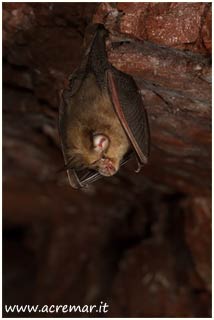RABIES
Luciano Schiazza M.D.
Dermatologist
c/o InMedica - Centro Medico Polispecialistico
Largo XII Ottobre 62
cell 335.655.97.70 - office 010 5701818
www.lucianoschiazza.it

Rabies (from the Latin rabies, “madness” because of its potentially violent nature) is a viral zoonotic disease (disease transmitted to humans from animals), widely distributed on nearly every continent of the globe. Rabies infects domestic (dogs, cats) and wild ( foxes, bats, monkeys, raccoons, skunks, wolves, jackals, coyotes) animals.
The virus of rabies is a Lyssavirus, from greek word “lyssa”, “violent, lud”. Virus concentrates in the salivary glands, which explains why it is usually is spread by bites. The virus invades the muscles and then travels to the central nervous system (encephalitis) following the peripheral nerves and then further into other organs.
Usually humans become infected with rabies through the bites, scratches, licks on broken skin and mucous membranes of an infected dog or cat, by exposure to infected saliva. There are at least two other ways in which humans have been known to have contracted rabies, both extremely rare. Two people were exposed by breathing the air in caves inhabited by rabid bats. And six people contracted rabies following implants of corneas from donors who had undiagnosed rabies.
After a symptom-free incubation period that ranges from 10 days to a year or longer (the average is 30 to 50 days) the first symptoms of rabies (prodromal stage)) may be non specific flu-like signs, such as malaise, fever, loss of appetite and headache. An important sign (over half of all patients) is paresthesia (pain or numbness) at the site of bite.
Then there is the latency stage: typical is the hydrophobia ,in which the patient has inability to swallow because the throat and jaw become paralized.
In the last stage the patient shows anxiety, insomnia, confusion, agitation, abnormal behavior, paranoia, terror, hallucination, disorentation and paralysis. The death is due to cardiac or respiratory arrest.
In dogs (as well cats) we recognize three stages of the disease. The first, prodromal stage (1-3 days) is characterized by behavioral changes. Then (excitative stage, furious rabies)( 3-4 days) the dog is hyperreactive and bite at anything near. In the final stage (paralytic stage) the animal shows incoordination, difficulty swallowing, loss of appetite and finally respiratory arrest.
Foxes, at the beginning of the prodromal stage, normally extremely cautions by nature, show a unusual euphoria, approach people, come into settlements, behave as if tame. But their saliva contain the virus and even in this stage are extremely dangerous.
The first and most valuable preventive post-exposure measure is thorough immediate cleaning of the site with soap and water for five minutes. After washing alcohol or iodine tinture should be applied. Exposed mucous membranes such as eyes, nose or mouth should be flushed well with water.
Soon after, immediate medical attention.
If the dog at the origin of exposure is more than a year old and has a vaccination certificate indicating that it has received at least 2 doses of a potent vaccine, the first not earlier than 3 months of age and another within 6 to 12 months later, observe the dog 10 days. If the dog shows any sign of illness during the observation period, the patient should receive full post-exposure treatment urgently. (WHO guide).
If the dog has not any vaccination certificate, post-exposure treatment should be start immediately after bite.
Patients who have not been vaccinated for rabies receive an injection of rabies immunoglobulin (contains antibodies to rabies virus) into the depth of the wound and around the wound as much as anatomically feasible and the vaccine (day 0). Then vaccine’s injections are administrered on days 3, 7, 14 and 28 in deltoid region or, in small children, into the antero-lateral area of the thigh muscle. Vaccines should not be injected into the gluteal region, which has been associated with vaccination failure due to injection into fat rather than muscle.
